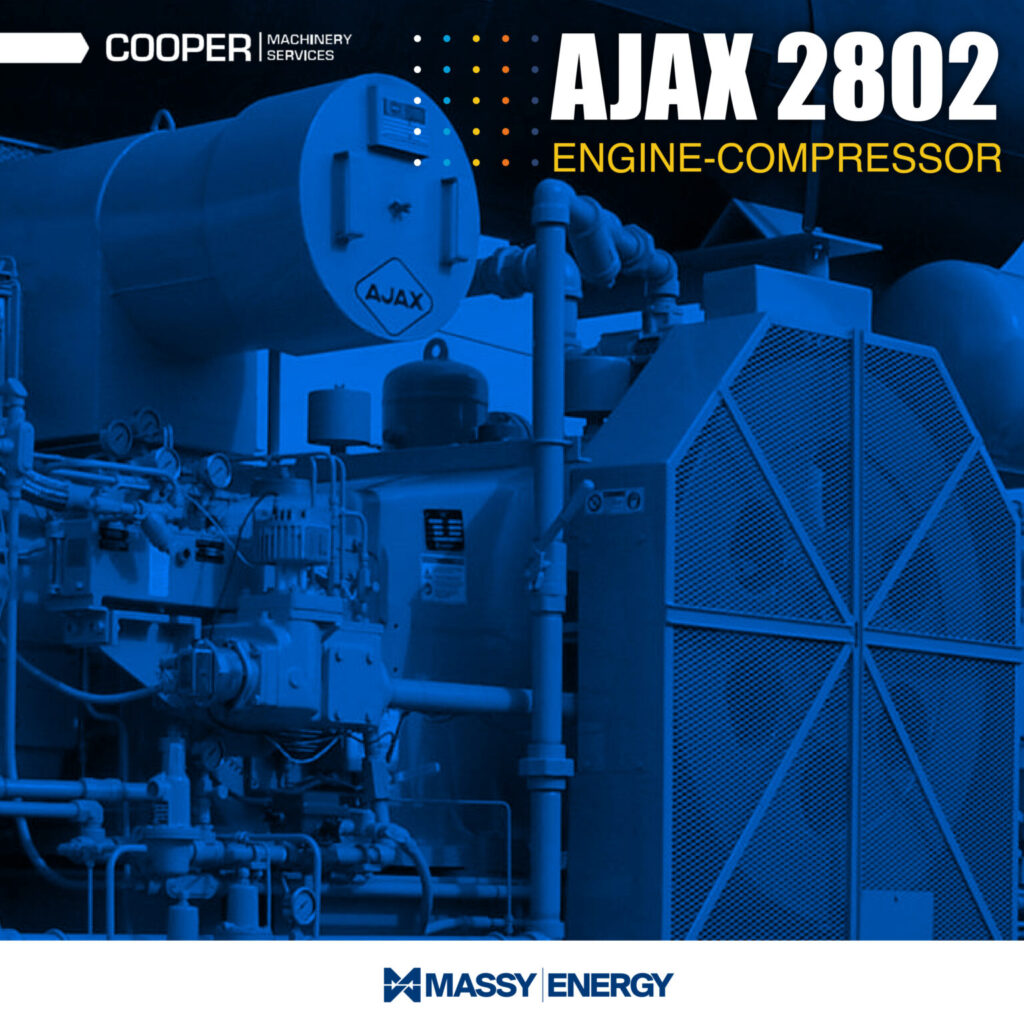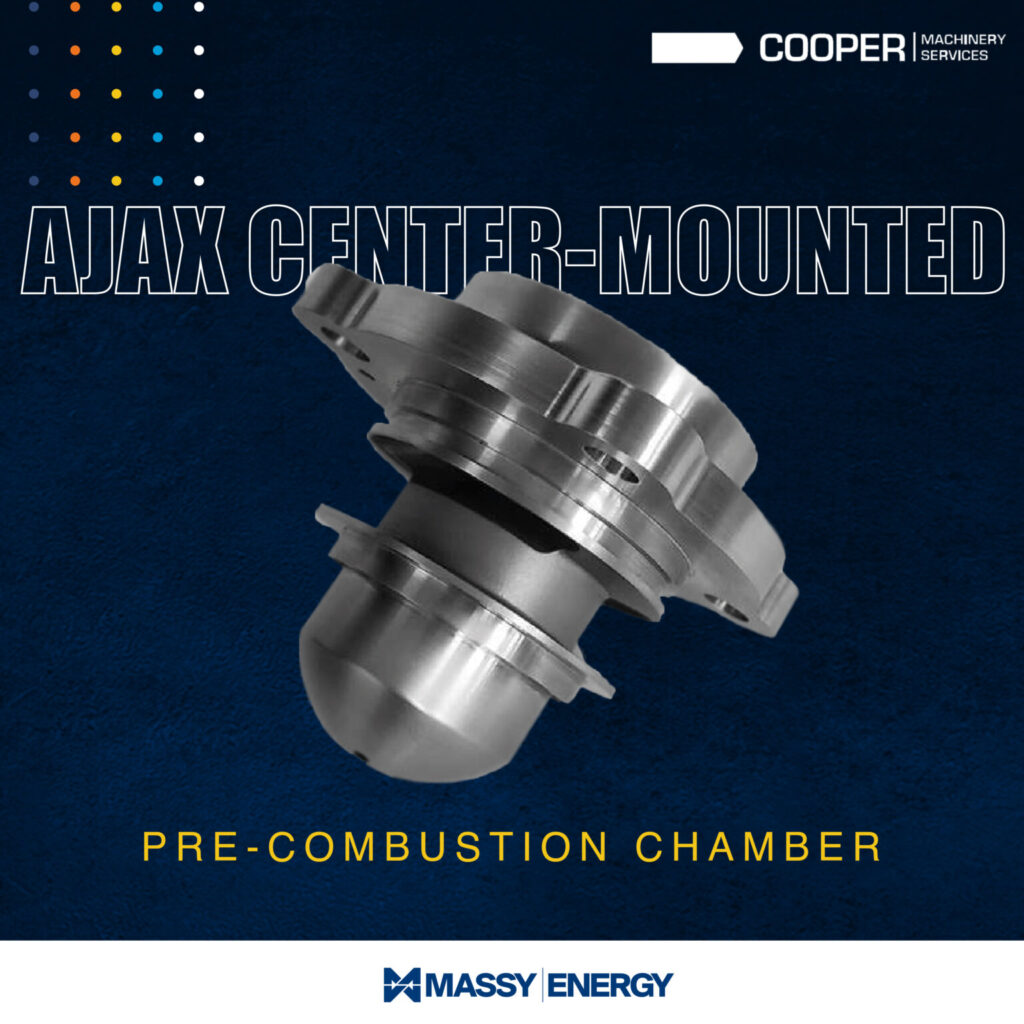Integral Engine Ajax 2800 0.56 Nox

Optimized power butt
The new power stock retains the legendary durability of the current AJAX 2800 series, but we’ve made it even better.
New geometric changes in the stock allow for a fully electronic feeding system with centrally mounted pre-combustion chambers.
The header is now optimized to work more efficiently with substantially lower emissions.
Cooper has painstakingly redesigned the AJAX 2800 Series engine components and combustion geometry to deliver a significant reduction in NOx emissions through lean burn and no selective catalytic reduction.
(SCR). The new and improved AJAX 2800 Ultra Low Emissions (ULE) integral lathe-engine now operates below NOx levels of zero.5 g/bhp-hr with a more than 2.5 percent improvement in fuel efficiency.
Retrofit kits are available for existing AJAX engines to achieve the same 0.5 g/bhp-hr NOx level.
- High compression ratio track
- Optimized power butt
- Center mounted pre-combustion chamber
- Electronic pre-combustion chamber control valves
- New electronic fuel injection system
- Intake bypass system to reduce methane emissions
| Key Benefits | YOU | ULE | improvement |
| Power (bhp} | 192-800 | 192-800 | Same |
| NOx (g/bhp-hr) | 3 | 0.5 | 83% |
| BSFC (Btu/bhp-hr) | 7800 | 7600 | 2.6% |
High compression ratio piston
Low NOx emissions are achieved without the need for post-treatment. The high compression ratio piston improves fuel efficiency and allows the engine to run with an ultra-lean air/fuel ratio.
This piston design maintains AJAX’s legendary ability to allow hot fires and high H2S levels.
Center mounted pre-combustion chamber
Perfect performance requires a precombustion chamber (PCC) design that ignites the main chamber efficiently and reliably.
By mounting the PCC in the center of the cylinder head, the air/fuel mixture is ignited evenly throughout the entire combustion chamber.
This term is already proven in the Cooper -Bessemer GMV and W-330 engine lines and has been further optimized in the AJAX line. This proven technology provides AJAX with a 0.5 g/bhp-h NOx solution, while maintaining the legendary durability of the 2800 series.

| AJAX Frame Ratings | DPC-2801 | DPC-2802 | DPC-2803 | DPC-2804 |
| Power (bhp/kW) | 192/143 | 384/286 | 600/447 | 800/597 |
| BSFC (Btu/bhp-hr) | 7,600 | 7,600 | 7,600 | 7,600 |
| NOx (g/bhp-hr) | 0.5 | 0.5 | 0.5 | 0.5 |
| Max/Min Speed (RPM) | 440/300 | 440/300 | 440/300 | 440/300 |
| No. of Power Cylinders | 1 | 2 | 3 | 4 |
| No. of Compression Cylinders | 1 | 2 | 2 | 3 |
Electronic Precombustion Chamber Check Valves (ePCC)
The electronic pre-combustion chamber check valve (ePCC) is a proven technology that Cooper has implemented in each and every line of large-bore, low-speed engines , such as Cooper Bessemer, Clark, lngersoll Rand, and Worthington. With the addition of the ePCC to the centrally mounted pre-combustion chamber, each combustion event receives the optimum dose of fuel to create repeatable and stable combustion in the primary chamber.
New electronic fuel injection system
The new electronic fuel system uses an individual drive for each fuel valve, so each tube will operate with an optimized air/fuel ratio.
The valves create an ideal mixture of air and fuel in the primary combustion chamber, improving combustion stability and reducing emissions.
The system gives the benefit of high-pressure fuel injection, keeping supply pressure unchanged from the 2800 LE series.
Intake bypass system to reduce methane emissions
As methane emissions face increased scrutiny, Cooper is back ahead by designing AJAX engines to minimize their footprint.
On two- strokes like the AJAX 2800 series, the air/fuel ratio can become too lean as power drops.
This results in incomplete combustion and high methane production when engine load is reduced.
Our proprietary approach to correcting high methane production at low engine torque is to bypass a controlled amount of intake air.
This optimizes the air/fuel ratio for the engine to operate under the proper conditions throughout the engine ‘s speed/load map .
Non-methane and non-methane hydrocarbon emissions are substantially reduced throughout the engine’s operating load and speed range.
Exhaust gas temperatures remain elevated under low load conditions, further optimizing oxidation catalyst performance
